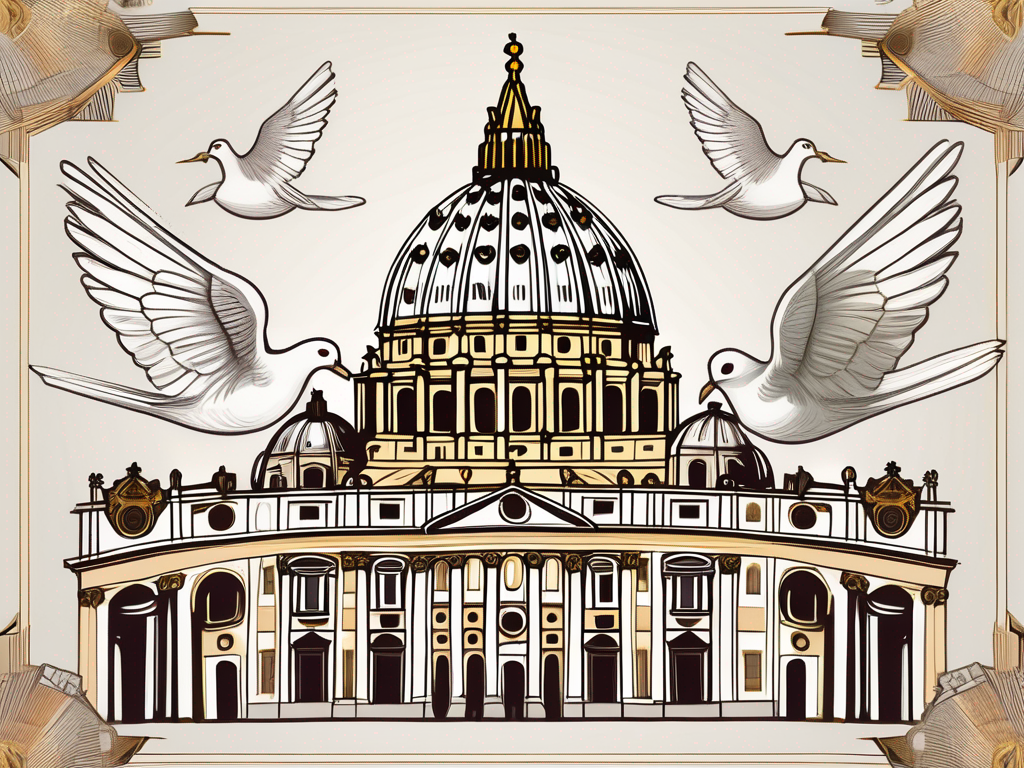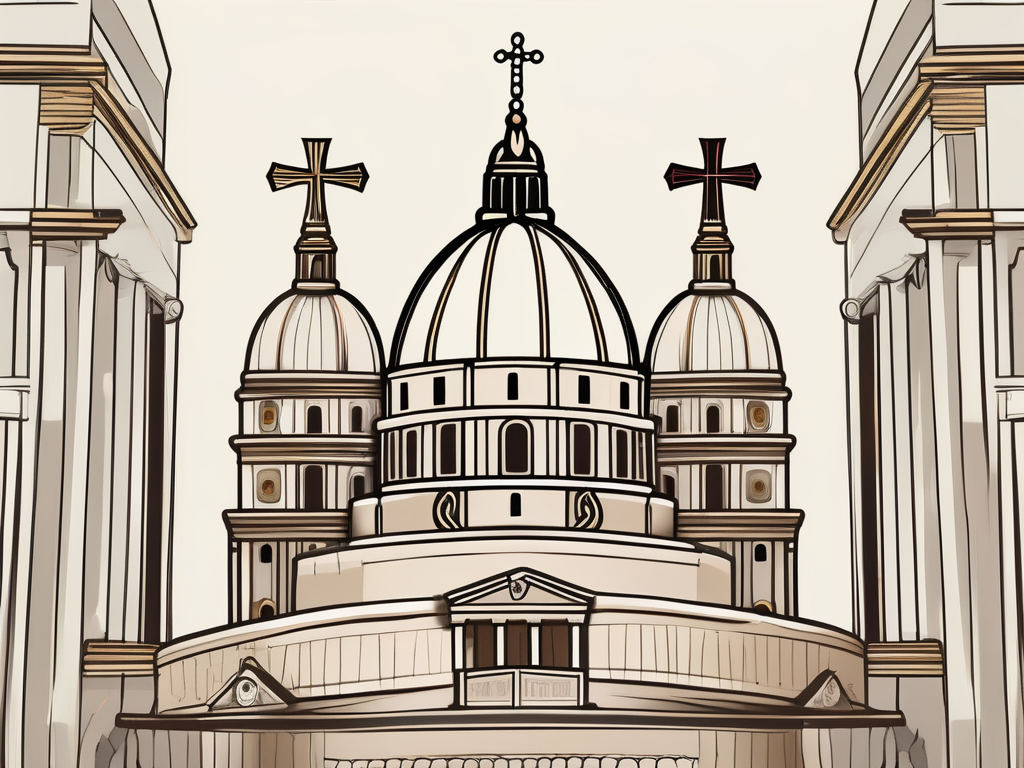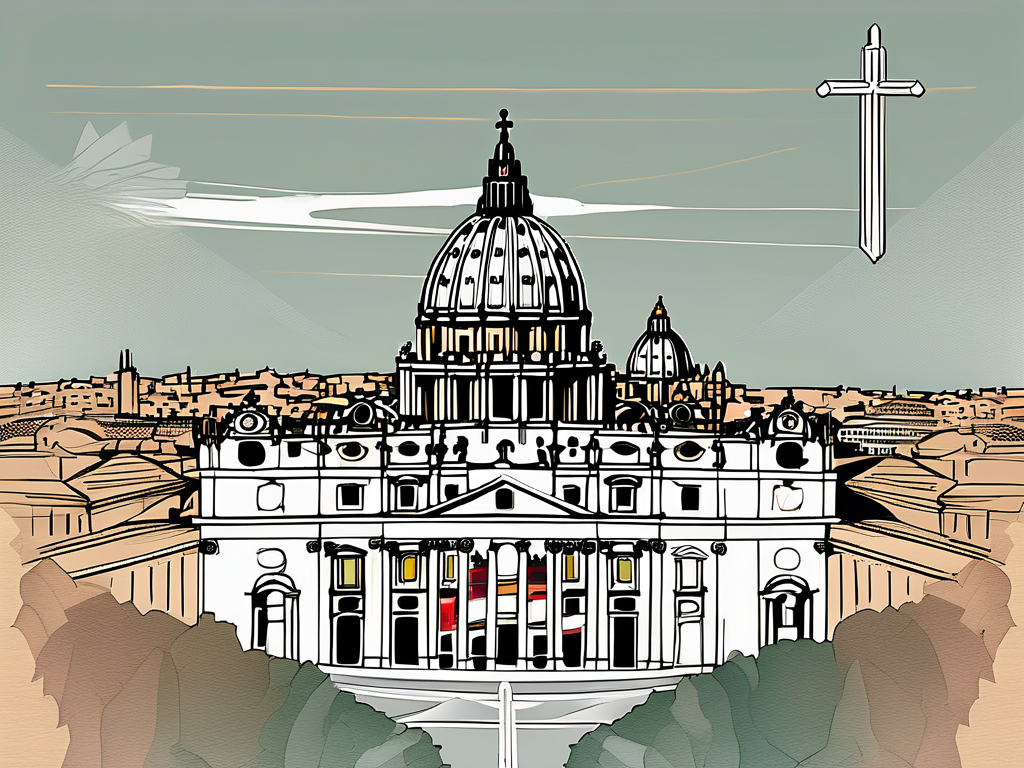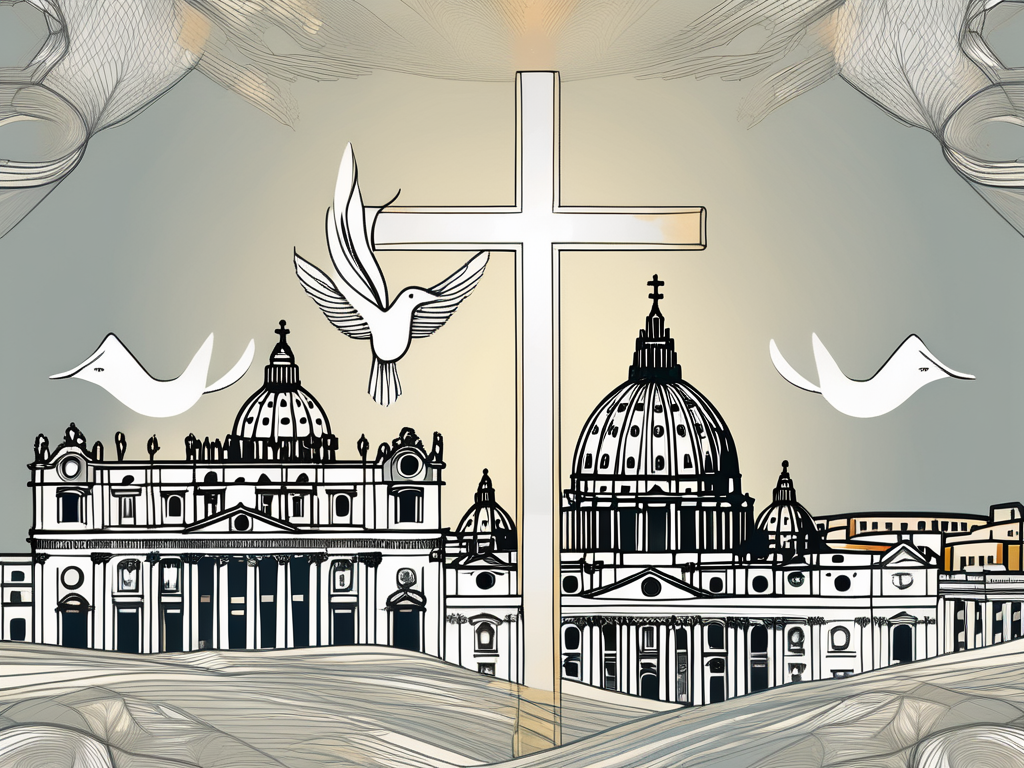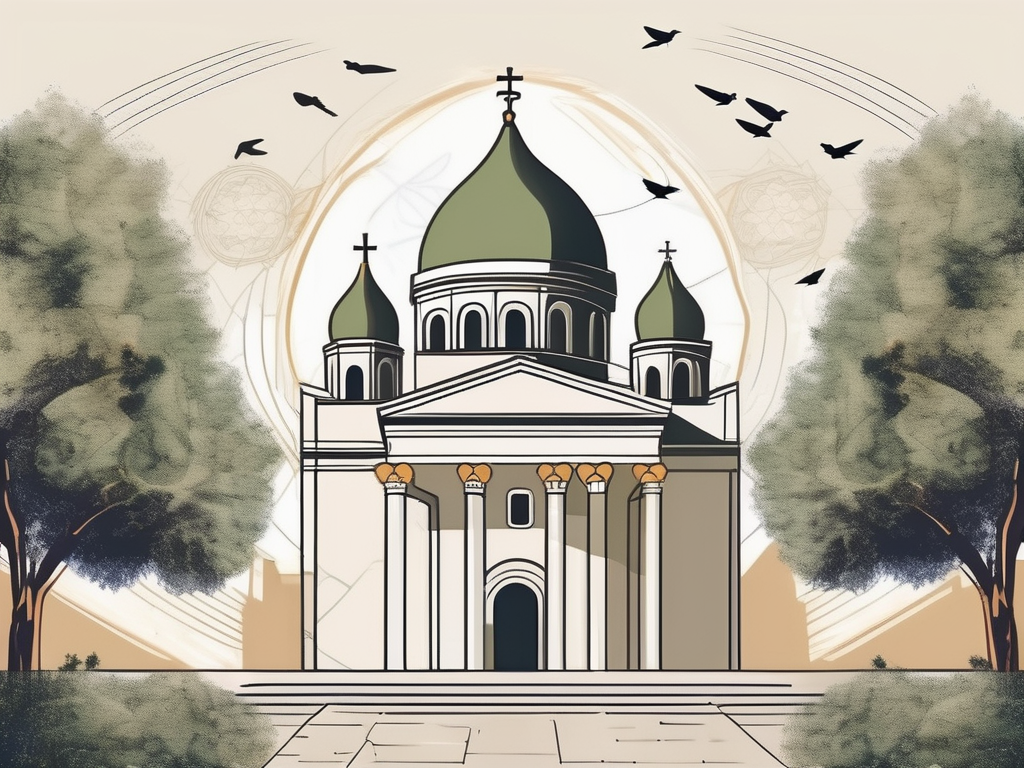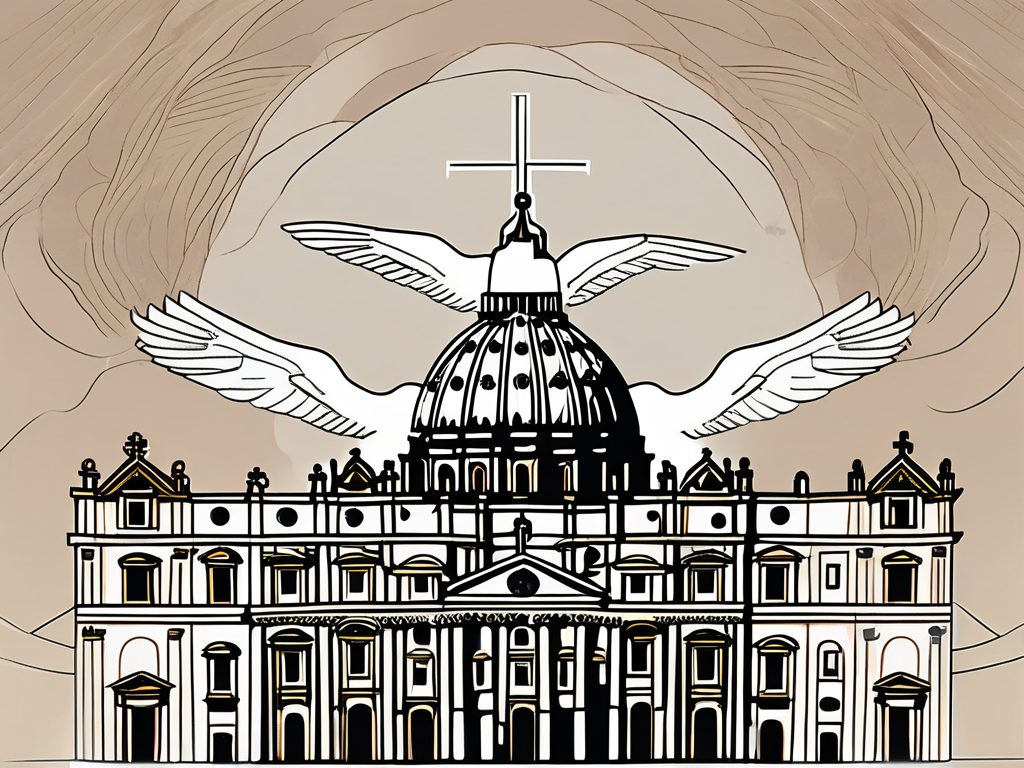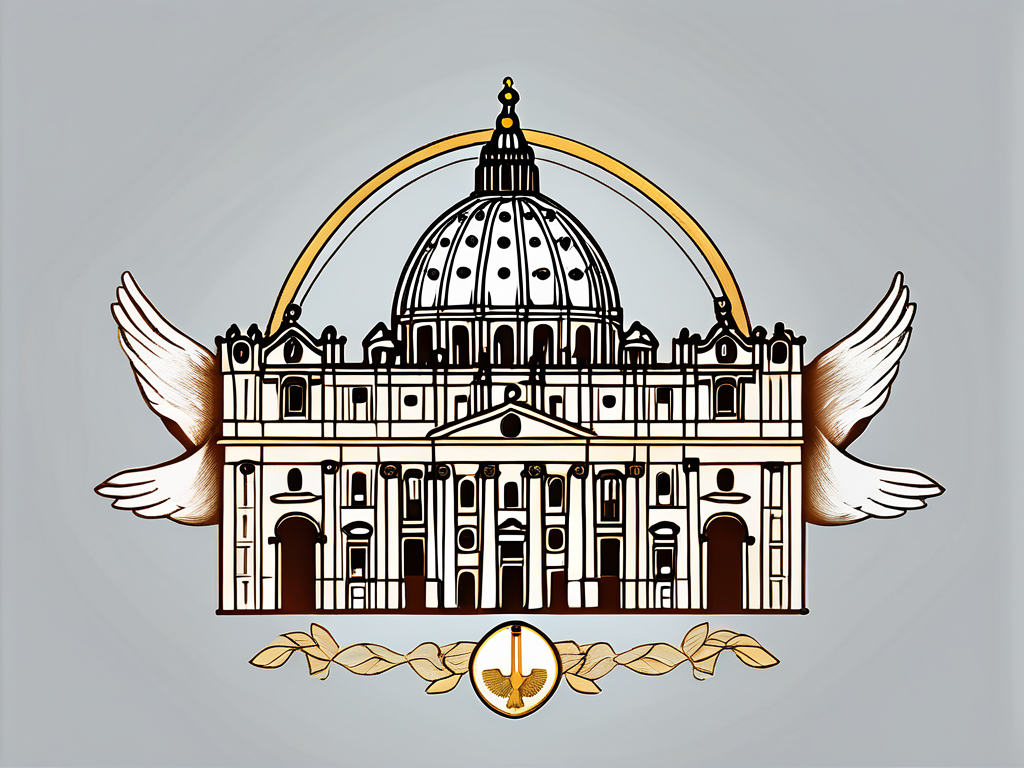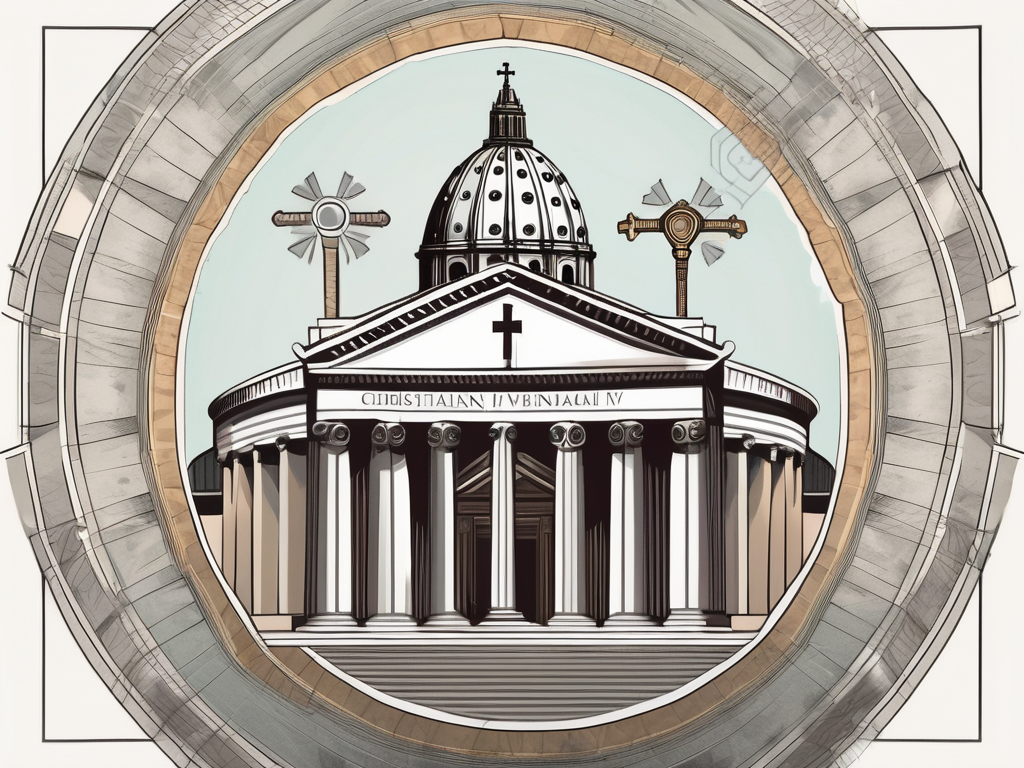Welcome to the fascinating story of Saint Benedict of Nursia, a man whose life and teachings continue to inspire millions around the world. From his early years to his lasting impact on Western monasticism, let’s explore the incredible journey of this revered saint.
Early Life of Saint Benedict
Saint Benedict’s story begins with his birth and family background. Born in Nursia, Italy in the early 6th century, he came from a noble and educated family. Growing up, Benedict reveled in the privileges bestowed upon him, yet he felt a profound longing for something greater.
As he reached adolescence, Benedict’s yearning for spiritual fulfillment intensified. He pursued his education diligently and sought solace in prayer and reflection. These formative years would shape the path he would ultimately follow.
During his studies, Benedict immersed himself in the rich intellectual and cultural traditions of his time. He delved into the works of renowned philosophers, theologians, and scholars, seeking wisdom and understanding. His thirst for knowledge was insatiable, and he became known for his sharp intellect and profound insights.
However, despite his academic achievements, Benedict’s heart remained restless. He yearned for a deeper connection with the divine, a purpose that transcended the confines of earthly pursuits. This longing led him to embark on a spiritual journey, a quest for enlightenment and inner peace.
Leaving behind the comforts of his privileged life, Benedict ventured into the wilderness, seeking solitude and communion with God. He found solace in the rugged beauty of nature, where he could contemplate the mysteries of existence and listen to the whispers of his soul.
Days turned into weeks, and weeks turned into months as Benedict immersed himself in a life of prayer, fasting, and self-reflection. He embraced a life of simplicity and renunciation, forsaking the material world in pursuit of spiritual enlightenment.
During his time in seclusion, Benedict encountered numerous challenges and temptations. The devil, recognizing his potential for greatness, sought to derail his spiritual journey. But Benedict, armed with unwavering faith and an indomitable spirit, resisted the allure of worldly pleasures and remained steadfast in his devotion.
As word of Benedict’s spiritual quest spread, others began to seek his guidance and wisdom. His reputation as a holy man grew, and soon disciples flocked to him, eager to learn from his teachings and emulate his way of life.
Benedict’s teachings emphasized the importance of balance and moderation. He believed in the transformative power of work and prayer, advocating for a harmonious integration of spiritual and physical labor. His teachings laid the foundation for what would later become the Benedictine Order, a monastic community dedicated to a life of prayer, study, and service.
The early life of Saint Benedict was marked by a relentless pursuit of spiritual fulfillment, a journey that would shape not only his own destiny but also the lives of countless others. His unwavering commitment to his faith and his profound insights continue to inspire and guide seekers of truth and enlightenment to this day.
Spiritual Awakening and Monastic Life
At the crossroads of his life, Benedict’s heart led him to retreat to Subiaco, seeking solitude and a deeper connection with God. In the rugged wilderness of Subiaco, he lived as a hermit, dedicating himself to prayer and contemplation.
During his time in Subiaco, Benedict’s days were filled with a profound sense of peace and serenity. The beauty of nature surrounded him, providing a constant reminder of God’s presence. Each morning, he would rise before dawn and make his way to a secluded spot, where he would spend hours in silent meditation. The stillness of the early morning hours allowed him to quiet his mind and open his heart to the divine.
As the years went by, Benedict’s holiness and wisdom began to attract disciples who sought his guidance. People from all walks of life would make the arduous journey to Subiaco, hoping to catch a glimpse of the man who had found such profound peace. Many were drawn to his gentle demeanor and the sense of inner tranquility that seemed to radiate from him.
Benedict welcomed these seekers with open arms, sharing his insights and teachings with them. He emphasized the importance of balance in one’s spiritual life, encouraging his disciples to find harmony between work and prayer. He taught them that true holiness was not found in extreme asceticism, but rather in the everyday moments of life.
Word of Benedict’s wisdom and holiness spread far and wide, reaching even the ears of influential figures in the Church. Recognizing the value of his teachings, Pope Gregory the Great invited Benedict to establish a community grounded in his way of life. With the Pope’s blessing, Benedict founded the famous Monastery at Monte Cassino.
The Monastery at Monte Cassino became a beacon of light in a world filled with darkness. It was a place where men could come and dedicate their lives to God, following the Rule of Benedict. The Rule, which emphasized humility, obedience, and community, provided a framework for living a life of spiritual depth and purpose.
Within the walls of the monastery, the monks lived a structured and disciplined life. They would rise before dawn for prayer, engage in manual labor, study the scriptures, and come together for communal meals. The monastery became a place of learning and intellectual pursuit, with its library housing a vast collection of ancient texts.
Under Benedict’s guidance, the monastery thrived, attracting more and more men who were seeking a deeper connection with God. The monks became known for their hospitality, welcoming travelers and offering them a place of rest and refuge. They also played an important role in the surrounding communities, providing education and assistance to those in need.
Benedict’s teachings and way of life continue to inspire people to this day. His emphasis on balance, humility, and community resonates with those who seek a deeper spiritual awakening. The Monastery at Monte Cassino stands as a testament to his enduring legacy, a place where people can still find solace and guidance on their own spiritual journeys.
The Rule of Saint Benedict
Central to understanding Benedict’s legacy is his Rule, a guide designed to foster spiritual growth and community living. Based on principles of humility, obedience, and moderation, this Rule has influenced countless generations of monks and nuns.
Benedict’s Rule emphasizes the importance of work and prayer, urging individuals to find balance in their daily lives. By embracing simplicity, silence, and self-discipline, his followers experience spiritual transformation and a closer union with God.
Within the Rule of Saint Benedict, there is a profound emphasis on the value of work. Benedict believed that work was not just a means of survival, but a way to cultivate a sense of purpose and contribute to the well-being of the community. Monks and nuns were encouraged to engage in various forms of manual labor, such as farming, gardening, and craftsmanship. Through these tasks, they not only provided for their own sustenance but also learned valuable skills and developed a strong work ethic.
Furthermore, Benedict’s Rule highlights the significance of prayer in the spiritual journey. Monastic life revolved around a structured schedule of communal and individual prayer. The monastic community would gather multiple times a day to participate in the Divine Office, a series of prayers and psalms. This rhythm of prayer created a sacred atmosphere, fostering a deep connection with the divine and nurturing a sense of inner peace.
In addition to work and prayer, Benedict’s Rule emphasizes the virtues of simplicity, silence, and self-discipline. These qualities were seen as essential for monks and nuns to detach themselves from worldly distractions and focus on their spiritual growth. By embracing simplicity, they learned to live with only the essentials, free from the burden of material possessions. Silence was valued as a means of cultivating inner stillness and listening to the voice of God. Self-discipline allowed individuals to develop self-control, overcoming their desires and temptations.
Through the practice of Benedict’s Rule, monks and nuns embarked on a transformative journey of self-discovery and spiritual enlightenment. The Rule provided a framework for living a life of purpose, guiding individuals to find meaning in their work, deepen their connection with God through prayer, and cultivate virtues that would lead to personal growth.
Today, the influence of the Rule of Saint Benedict extends far beyond the walls of monasteries and convents. Its principles of humility, obedience, moderation, work, prayer, simplicity, silence, and self-discipline continue to inspire individuals seeking a more meaningful and balanced life. Whether in religious or secular contexts, the teachings of Saint Benedict offer timeless wisdom and guidance for those on the path of spiritual development.
Miracles and Legends
Throughout his life, Saint Benedict was known for performing miraculous acts and displaying divine favor. The Dialogues of Pope Gregory I contain numerous accounts of these extraordinary events.
One legendary story recounts how Benedict, miraculously aware of a fellow monk’s attempt to poison him, saved himself by commanding a raven to take away the loaf of bread laced with poison. This tale illustrates the saint’s unwavering faith and connection with all creatures, no matter how small.
Death and Canonization
As his life drew to a close, Saint Benedict’s impact was already undeniable. In his final days, he devoted himself to prayer and guiding his disciples. On March 21, 547, Benedict peacefully passed away, leaving behind a cherished legacy.
Recognizing his immense contributions to Christianity, Saint Benedict was canonized by the Church. His teachings continue to shape the lives of monks and nuns today, as well as those seeking spiritual growth and a meaningful connection with God.
The Life and Legacy of Saint Benedict of Nursia
In conclusion, the life of Saint Benedict of Nursia serves as an inspiration and a source of guidance for countless individuals across the globe. From his early years of seeking solace to the establishment of his monastic community and the profound impact of his Rule, his legacy endures.
As we navigate the complexities of our modern lives, Saint Benedict’s lessons of humility, prayer, and moderation can bring solace and spiritual growth. Let us embrace these teachings and strive to live with purpose and compassion, just as Saint Benedict did centuries ago.

